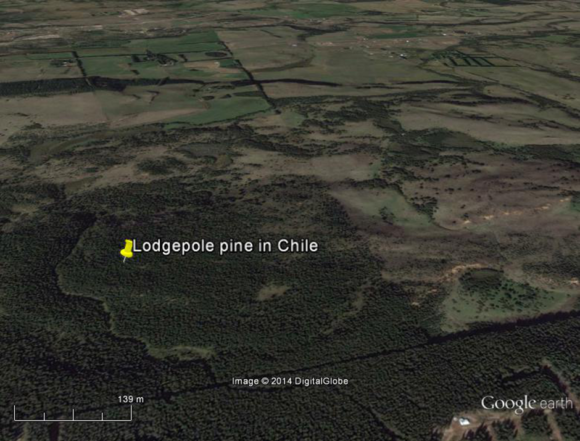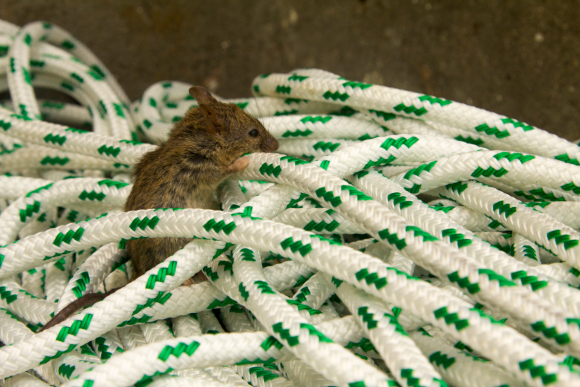9 October 2020 | By Dave Richardson
A team of international scientists, including several with current or previous affiliations with the Centre for Invasion Biology (C∙I∙B), have collaborated to propose a series of global guidelines for the sustainable use of non-native tree species to help protect biodiversity and ecosystems around the world already threatened by climate change.

The paper, published in the journal NeoBiota, uses the Council of Europe – Bern Convention Code of Conduct on Invasive Alien Trees as a starting point to present eight recommendations aimed at maximising the benefits of non-native trees, while minimising their negative impacts.
The guidelines include using native trees wherever possible, or non-invasive non-native trees as opposed to invasive non-native trees; being aware of the risk of invasion and considering global change trends and developing and supporting global networks and collaborative research and information sharing on native and non-native trees.
The scientists suggest that the guidelines are a first step towards building a global agreement on the precautions that should be taken when introducing and planting non-native trees. The aim is that the guidelines should serve to complement statutory requirements under international and national legislation.
Lead author Professor Giuseppe Brundu from the University of Sassari in Italy said “The application of the global guidelines and the achievement of their goals will help to conserve forest biodiversity, ensure sustainable forestry, and contribute to the achievement of several Sustainable Development Goals (SDGs) of the United Nations linked with forest biodiversity.”
The researchers highlight how non-native species – such as Prosopis juliflora which was introduced in Eastern Africa in the 1970s to provide wood and fodder for livestock and help reduce soil erosion and the effects of dust storms – make up 44% of plantation forests globally.
They point to major tree planting campaigns, including the 60 Million Trees Initiative from the Madagascar Government, which either do not specify or include non-native species planted – often to balance economic and ecological interests as with the case in Madagascar. Other similar schemes have included a project to plant 60 million trees (a mix of native and non-native species) in Italy – one for each Italian citizen – to fight climate change.
However, the scientists warn that unless their global guidelines are taken seriously the spread of non-native tree species will make the conservation of forest biodiversity and work towards achieving a number of SDGs – linked with forest sustainability – difficult to achieve.
Professor Dave Richardson, C∙I∙B Director and senior author on the paper, added “The global guidelines on non-native tree species offer general recommendations and provide a basic framework and suggestions on tools for planning and implementing sustainable use of non-native trees in nationally appropriate and scientifically sound practices that account for national and sub-national needs.”
Dr Urs Schaffner, co-author and Head of Ecosystems Management at Centre for Agriculture and Bioscience International (CABI) in Switzerland, an expert on Prosopis juliflora (mesquite), emphasized that invasive trees such as mesquite impact massively on rural people’s livelihoods with. For example, in Baringo Country in Kenya dense invasive stands of mesquite cover 86% of grassland area, rendering them virtually useless.
Dr Schaffner added, “It is important to bear in mind that national circumstances vary considerably in terms of biophysical conditions, institutional and legal frameworks, economic challenges and possibilities, management, and use, among other factors. Therefore, no ‘one-size-fits-all’ approach can be applied in the implementation of the guidelines. Instead, various technical and organisational options must be combined to achieve efficient implementation of the guidelines.”
The abridged guidelines:
- Use of native trees, or non-invasive non-native trees, in preference to invasive non-native trees;
- Be aware of and comply with international, national, and regional regulations concerning non-native trees;
- Be aware of the risk of invasion and consider global change trends;
- Design and adopt tailored practices for plantation site selection and silvicultural management;
- Promote and implement early detection and rapid response programmes;
- Design and adopt tailored practices for invasive non-native tree control, habitat restoration, and for dealing with highly modified ecosystems;
- Engage with stakeholders on the risks posed by invasive non-native trees, the impacts caused, and the options for management;
- Develop and support global networks, collaborative research, and information sharing on native and non-native trees.
Full paper reference
Brundu G, Pauchard A, Pyšek P, Perg J, Bindewald AM, Brunori A, Canavan S, Campagnaro T, Celesti-Grapow L, Dechoum M de S, Dufour-Dror J-M, Essl F, Flory LS, Genovesi P, Guarino F, Guangzhe L, Hulme PE, Jäger H, Kettle CJ, Krumm F, Langdon B, Lapin K, Lozano V, Le Roux JJ, Novoa A, Nuñez MA, Porté AJ, Silva JS, Schaffner U, Sitzia T, Tanner R, Tshidada N, Vítková M, Westergren M, Wilson JRU, Richardson DM (2020). Global guidelines for the sustainable use of non-native trees to prevent tree invasions and mitigate their negative impacts,’ NeoBiota 61: 65-116.
The paper is available to view open access here:https://neobiota.pensoft.net/article/58380/
Media enquiries
- Prof. Giuseppe Brundu, University of Sassari, Viale, Italy, email: gbrundu@uniss.it
- Prof. David Richardson, Stellenbosch University, South Africa, email: rich@sun.ac.za
- Dr Urs Schaffner, CABI Switzerland, email: u.schaffner@cabi.org
 The proposed logo for the global guidelines for the sustainable use of non-native trees. It is hoped that private forestry enterprises, local authorities, arboreta and public forest managers will be willing to publicise their adherence to the guidelines by displaying the logo at their facilities and using it on their products.
The proposed logo for the global guidelines for the sustainable use of non-native trees. It is hoped that private forestry enterprises, local authorities, arboreta and public forest managers will be willing to publicise their adherence to the guidelines by displaying the logo at their facilities and using it on their products.


